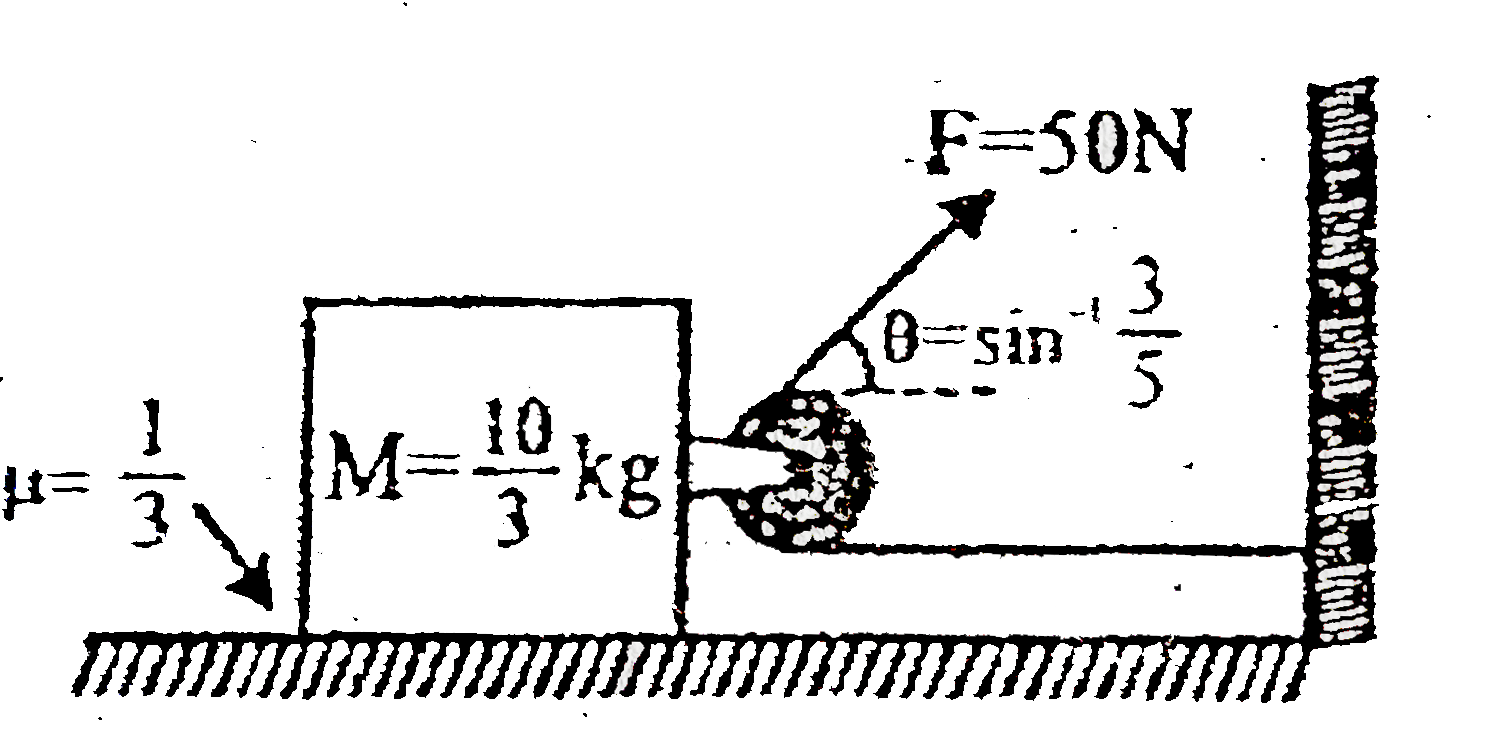A man of 60kg mass is in a lift. Find the apparent weight of the man when the lift is moving (a) up with uniform acceleration 4ms−2 (b) down with uniform acceleration of 2ms−2 (g=10ms−2)
The correct Answer is:840N,480N
To find the apparent weight of a man in a lift under different conditions, we can use the following steps:
Given:
- Mass of the man (m) = 60 kg
- Acceleration due to gravity (g) = 10 m/s²
Part (a): Lift moving up with uniform acceleration of 4 m/s²
1. Identify the forces acting on the man:
- The gravitational force acting downward: Fg=m⋅g=60kg⋅10m/s2=600N
- The lift is accelerating upward, which means the apparent weight will be greater than the actual weight.
2. Calculate the apparent weight:
- The apparent weight (W') when the lift is moving up is given by:
W′=m⋅(g+a)
- Where a is the acceleration of the lift (4 m/s²).
- Substitute the values:
W′=60kg⋅(10m/s2+4m/s2)=60kg⋅14m/s2
- Calculate:
W′=840N
Part (b): Lift moving down with uniform acceleration of 2 m/s²
1. Identify the forces acting on the man:
- The gravitational force acting downward remains the same: Fg=600N
- The lift is accelerating downward, which means the apparent weight will be less than the actual weight.
2. Calculate the apparent weight:
- The apparent weight (W') when the lift is moving down is given by:
W′=m⋅(g−a)
- Where a is the acceleration of the lift (2 m/s²).
- Substitute the values:
W′=60kg⋅(10m/s2−2m/s2)=60kg⋅8m/s2
- Calculate:
W′=480N
Final Answers:
- (a) Apparent weight when the lift moves up: 840 N
- (b) Apparent weight when the lift moves down: 480 N
- Mass of the man (m) = 60 kg
- Acceleration due to gravity (g) = 10 m/s²
- The gravitational force acting downward: Fg=m⋅g=60kg⋅10m/s2=600N
- The lift is accelerating upward, which means the apparent weight will be greater than the actual weight.
- The apparent weight (W') when the lift is moving up is given by:
W′=m⋅(g+a)
- Where a is the acceleration of the lift (4 m/s²).
- Substitute the values:
W′=60kg⋅(10m/s2+4m/s2)=60kg⋅14m/s2
- Calculate:
W′=840N
- The gravitational force acting downward remains the same: Fg=600N
- The lift is accelerating downward, which means the apparent weight will be less than the actual weight.
- The apparent weight (W') when the lift is moving down is given by:
W′=m⋅(g−a)
- Where a is the acceleration of the lift (2 m/s²).
- Substitute the values:
W′=60kg⋅(10m/s2−2m/s2)=60kg⋅8m/s2
- Calculate:
W′=480N
- (a) Apparent weight when the lift moves up: 840 N
- (b) Apparent weight when the lift moves down: 480 N
Similar Questions
A man of 60kg mass is in a lift. Find the apparent weight of the man when the lift is moving up with uniform speed(g=10ms−2)
View SolutionIn a given figure the acceleration of M is (g=10ms−2)
 View Solution
View SolutionA man of mass 70 kg stands on a weighing machine in a lift, which is moving (a) upwards with a uniform speed of 10ms−1
(b) downwards with a uniform acceleration of 5ms−2
(c) upwards with a uniform acceleration of 5ms−2 What would be the readings on the scale in each case ?
(d) What would be the reading if the lift mechanism failed and it hurtled down freely under gravity ?View SolutionA lift is moving up with an acceleration of 3.675 m/sec2. The weight of a man-
View SolutionThe mass of man when standing on the lift is 60 kg. The weight when the lift is moving upwards with acceration 4.9ms−2 is
View SolutionA person of mass 60 kg stands on a weighing machine in a lift which is moving
a) upwards with a uniform retardation of 2.8ms−2.
b) downwards with a uniform retardation of 2.2ms−2. Find the reading shown by the weighing machine in each caseView SolutionA monkey of mass 40 kg climbs on a rope which can withstand a maximum tension of 600 N In which of the following cases will the rope break : The monkey
(a) climbs up with an acceleration of 6ms−2
(b) climbs down with an acceleration of 4ms−2
(c) climbs up with a uniform speed of 5ms−1
(d) falls down the rope nearly freely under gravity ? (Ignore the mass of the rope.)View SolutionA man, of mass 60kg, is riding in a lift. The weights of the man, when the lift is acceleration upwards and downwards at 2ms−2 are respectively.
(Taking g=10ms−2)View SolutionThe mass of a lift if 600kg and it is moving upwards with a uniform acceleration of 2m/s2. Then the tension in the cable of the lift is :
View SolutionA man of mass 70 kg stands on a weighing scale in a lift which is moving downward with the uniform acceleration of 5ms2 . The reading on the weighing scale is
View Solution

